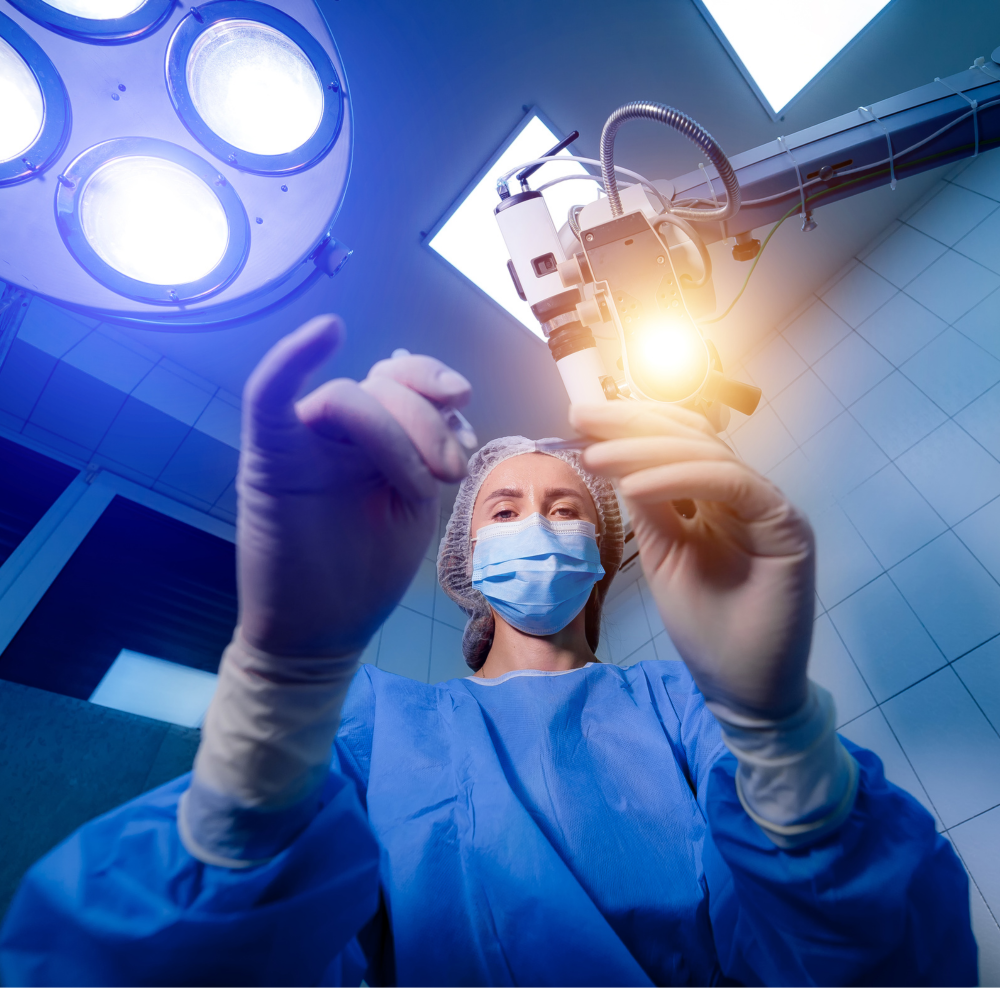Cataract surgery is a common procedure to restore vision. It is one of the safest and most successful types of eye surgery. The process involves replacing the cloudy lens of the eye with an artificial one. During the procedure, a wide range of specialized equipment is used to ensure a successful outcome. In this post, we will explore the types of equipment used in cataract surgery. We will discuss the importance of each piece of equipment and how it helps to improve the accuracy and safety of the procedure. By understanding the various types of equipment used in cataract surgery, you can have a better understanding of the advanced technology used by eye care professionals to help restore vision.
Phacoemulsification machines for the fragmentation and removal of the cataract
Phacoemulsification machines are the most common type of equipment used in cataract surgery. These machines use ultrasonic energy to fragment and remove cataracts from the eye. Ultrasonic energy is used to break up the cataract and suction it away, allowing a new intraocular lens to be inserted. This type of equipment is considered the most efficient and safest way to perform cataract surgery.
Microsurgical instruments for manipulating the lens and intraocular structures
Microsurgical instruments are essential components of cataract surgery and are used to manipulate the lens and intraocular structures. These instruments are designed to be precise and delicate, allowing for the safe and successful extraction of the cataract. Common microsurgical instruments used in cataract surgery include intraocular forceps, phacoemulsification needles, and iris retractors. By utilizing these instruments during surgery, cataract surgeons are able to restore sight in a safe and efficient manner.
Ophthalmic viscoelastic devices to maintain intraocular pressure
Ophthalmic viscoelastic devices (OVDs) are commonly used in cataract surgery to maintain intraocular pressure during the procedure. When inserted into the anterior chamber, OVDs form a cushion between the lens and the cornea, creating a stable and safe environment for the surgeon to work. OVDs are available in different sizes and viscosities, and can be inserted and removed using special tools. OVDs can be used to facilitate the introduction of a cataract-removal instrument, and also to adjust the intraocular pressure during the procedure.
Intraocular lenses for refractive correction after cataract removal
Intraocular lenses (IOLs) are one of the essential pieces of equipment used in cataract surgery. IOLs are surgically implanted lenses, and they are used to refract light correctly onto the back of the eye after the cataract has been removed. Depending on the patient’s eye anatomy, the IOL may be monofocal, multifocal, or accommodating. There are a range of IOLs available, from standard monofocal IOLs to advanced technology IOLs, such as toric, multifocal, and extended range of vision IOLs. The type of IOL that is best suited to the patient’s individual eye anatomy will be determined by the ophthalmologist.
Microkeratomes for cutting the corneal flap for phacoemulsification
Microkeratomes are specialized blades used to cut the corneal flap in phacoemulsification, a type of cataract surgery. These thin, precise blades are designed with a curved shape that is used to create a thin flap of tissue on the cornea, which allows the surgeon to gain access to the cataract. The design of the blades makes the procedure safer and more precise, ensuring that the flap remains intact and secure. Additionally, the microkeratomes are equipped with suction rings that help to hold the eye in place, allowing for a greater degree of precision. This type of equipment is essential for successful cataract surgery.
Endotamponades for achieving and maintaining a deep anterior chamber
Endotamponades are a type of equipment commonly used in cataract surgery to achieve and maintain a deep anterior chamber. The endotamponade is a foam pad constructed from a combination of natural and synthetic fibers, which is placed over the pupil in the anterior chamber of the eye. The endotamponade, which is typically filled with air or gas, helps to keep the anterior chamber filled with liquid, allowing the surgeon to perform the procedure without the liquid leaking out. Additionally, the endotamponade helps to create a stable, deep anterior chamber, which is essential for the successful completion of cataract surgery.
Ophthalmic lasers for iridotomies
Ophthalmic lasers are used in cataract surgery for iridotomies, or the creation of small holes in the iris. This technique is mainly used to reduce the risk of developing secondary glaucoma caused by the blockage of aqueous humour flow. The laser can penetrate the iris and create a tiny opening which allows the fluid to flow out. Ophthalmic lasers are essential in cataract surgery as they are precise and minimally invasive, resulting in a more comfortable and successful procedure for the patient.
Ophthalmic ultrasound devices for diagnosing and monitoring cataracts
Ophthalmic ultrasound devices are a crucial type of equipment used in cataract surgery. These devices are used to diagnose and monitor cataracts throughout the patient’s treatment. They are able to measure the lens density of the eye and can detect changes in the eye’s shape and size. Ophthalmic ultrasound devices also provide images that allow the surgeon to accurately assess the cataract’s position and eliminate potential complications. With the help of these devices, the surgeon can safely and accurately plan the cataract surgery procedure.
In conclusion, cataract surgery is a safe and effective procedure to improve vision and reduce symptoms of cataracts. The right type of equipment is essential for successful cataract surgery. By understanding the different types of equipment used in cataract surgery, you can ensure that the procedure is performed safely and with the best possible outcome. With the help of advanced technology, cataract surgery is becoming more precise and less invasive.
Disclaimer : This blog post is a product of online research and contains general information found across multiple outlets. This information is purely for entertainment purposes. Information provided may have inaccuracies and does not constitute medical/professional advice in any way, shape or form. Ophthalmon SA does not hold the responsibility for the accuracy of this information, nor for the use thereof.

